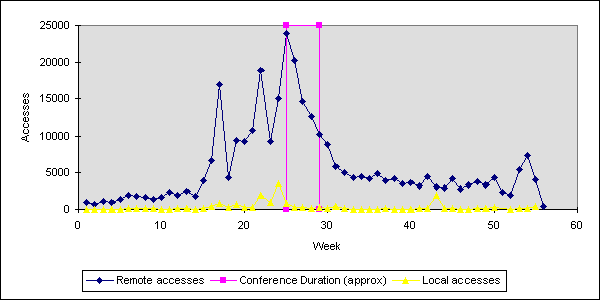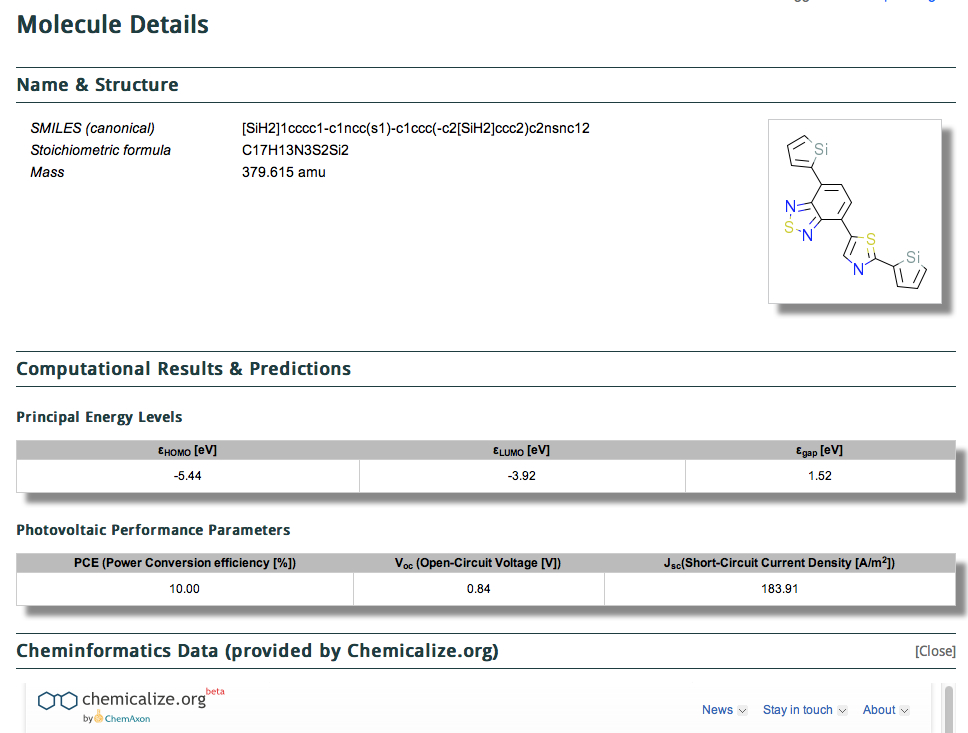OK, you have to be British to understand the pun in the title, a famous comedy skit about four candles. Back to science, and my mention of some crystal data now having a DOI in the previous post. I thought it might be fun to replicate the contents of one of my ACS slides here. Firstly, a DOI is one implementation of a more generic (and quite old) concept known as a Handle. This is one form of a persistent digital identifier.

I reminisced about the wonderfully naive but exciting Web-period of 1993-1994. This introduced the server-log analysis to us for the first time, and hits-on-a-web-pag e. One of our first attempts at crowd-sourcing and analysis was to run an electronic conference in heterocyclic chemistry and to look at how the attendees visited the individual posters and presentations by analysing the server logs.

The title of this post summarises the contents of a new molecular database: www.molecularspace.org[cite]10.1021/jz200866s[/cite] and I picked up on it by following the post by Jan Jensen at www.compchemhighlights.org (a wonderful overlay journal that tracks recent interesting articles). The molecularspace project more formally is called “ The Harvard Clean Energy Project: Large-scale computational screening and design of organic
The blog post by Rich Apodaca entitled “ The Horrifying Future of Scientific Communication ” is very thought provoking and well worth reading. He takes us through disruptive innovation, and how it might impact upon how scientists communicate their knowledge. One solution floated for us to ponder is that “ supporting Information, combined with data mining tools, could eliminate most of the need for manuscripts in the first place ”.
In this previous blog post I wrote about one way in which we have enhanced the journal article. Associated with that enhancement, and also sprinkled liberally throughout this blog, are links to a Digital Repository (if you want to read all about it, see DOI: 10.1021/ci7004737). It is a fairly specific repository for chemistry, with about 5000 entries.
Scientists write blogs for a variety of reasons. But these do probably not include getting tenure (or grants). For that one has to publish.
One of the many clever things that clever people can do with the Web is harvest it, aggregate it, classify it etc. Its not just Google that does this sort of thing! Egon Willighagen is one of those clever people. He runs the Chemical blogspace which does all sorts of amazing things with blogs.

This story starts with an organic chemistry tutorial, when a student asked for clarification of the Finkelstein reaction. This is a simple S N 2 type displacement of an alkyl chloride or bromide, using sodium iodide in acetone solution, and resulting in an alkyl iodide. What was the driving force for this reaction he asked?
